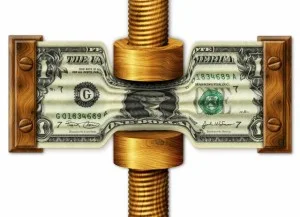Tuesday, May 7, 2013
The hurdles Fed has to overcome!
The persistent weakness of the U.S. economy - where deleveraging public and private sectors continues - has led to a stubbornly high unemployment and a lower than normal growth. The effects of austerity - a sharp increase in taxes and a sharp drop in public spending since the beginning of the year - further undermine economic performance. Indeed, recent data have silenced some officials of the Federal Reserve, who hinted that the Fed could start out the third round of quantitative easing, which is currently underway for a period indefinite. Given the low growth, high unemployment which fell only because discouraged workers are now leaving the workforce and inflation well below the goal of the Fed is not the time to begin to constrain liquidity. The problem is that liquidity injections by the Fed are not generating credit to finance the real economy, but to stimulate borrowing and risk-taking in financial markets. The bond sloppy risky under contractual commitments vague and excessively low interest rates is increasing, the stock market hit new highs, despite the slowdown in growth and the money goes mass to emerging markets high yield. Even the periphery of the Euro area has wall of liquidity triggered by the Fed, the Bank of Japan and other major central banks.
Because interest on state of the United States, Japan, the UK, Germany and Switzerland to absurdly low levels bond yields, investors are in a global search for yield. It is perhaps too early to say that many risky assets have reached bubble levels, and the levels of debt and risk-taking in financial markets have become excessive. However, the reality is that it is likely that credit bubbles and asset / equity form in the next two years, due to the accommodative U.S. monetary policy. The Fed has indicated that QE3 would continue until the labor market has improved enough probably early 2014, providing an interest rate of 0% until unemployment has dropped to less than 6.5%. Even when the Fed will begin to raise interest rates at some point in 2015, it will proceed slowly. In the previous tightening cycle that began in 2004, the Fed needed two years to normalize the policy rate. This time, the unemployment rate and household debt and public are much higher. A rapid normalization - such as realized in the space of a year in 1994 - would cause a crash in asset markets and the risk of a hard landing for the economy. But if financial markets already tend to bubble now, imagine the situation in 2015, when the Fed will begin to tighten its terms, and in 2017 at the earliest, when the Fed has completed the process of tightening. The last time interest rates have summers too low for too long during 2001-2004, and the normalization of rate thereafter was too slow, which had formed a huge credit bubble, housing and stock markets.
We know the end of this film, and we may be ready to see more. The weakness of the real economy and the labor market, as well as high debt ratios, suggest the need to exit the monetary stimulus slowly. But a slow output may create a bubble of credit and asset as important as the previous one, if not more. The search for stability in the real economy, it seems, could again lead to financial instability. Some at the Fed - as chairman Ben Bernanke and Vice Chairman Janet Yellen - argue that policymakers can pursue two objectives: the Fed will raise interest rates to slow economic stability, while preventing financial instability (bubbles and credit created by the high liquidity assets and low interest rates) through supervision and macro-prudential regulation the financial system. In other words, the Fed will use regulatory instruments to control credit growth, risk taking and debt. But another faction of the Fed - led by Governors Jeremy Stein and Daniel Tarullo - argues that macro-prudential tools have not been tested, and that the debt limit in a part of the financial market only pushes liquidity elsewhere. Indeed, the Fed regulates banks, so that the liquidity and debt migrate to the informal banking system if bank regulation is stricter. As a result, Stein and Tarullo argued that the Fed has only one instrument of interest rates to tackle all the problems of the financial system. But if the Fed has only one effective instrument - interest rates - the two objectives of economic and financial stabilities cannot be pursued simultaneously.
Either the Fed continues the primary purpose of keeping rates low for longer and to standardize very slowly, in which case a huge credit bubble and assets would form in time, either the Fed focuses on the prevention of instability financial and increases interest rates much faster than the low growth and high unemployment have also requested, thus stopping an already sluggish recovery. Exit policies QE and zero interest rates the Fed will be treacherous: a too quick exit would cause a crash in the real economy, while a slow start out by creating a huge bubble and then cause a crash the financial system. If the output can be operated successfully partisan compromise Fed is more likely to create bubbles.
Subscribe to:
Post Comments (Atom)

0 comments:
Post a Comment
Note: Only a member of this blog may post a comment.